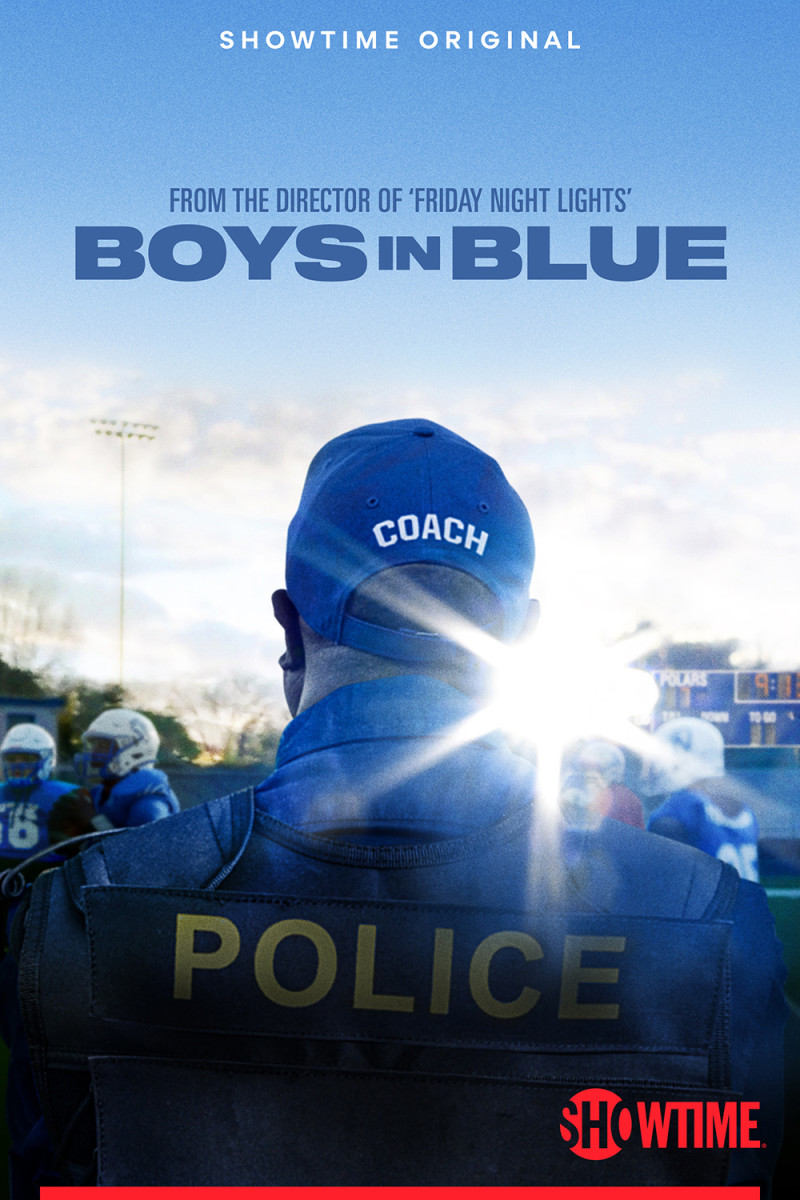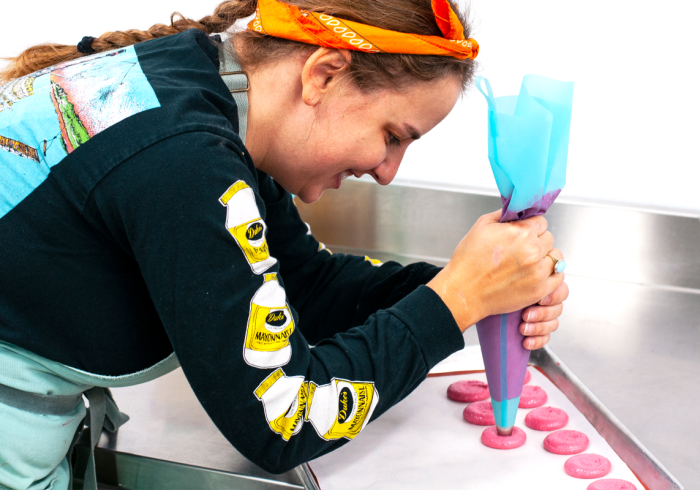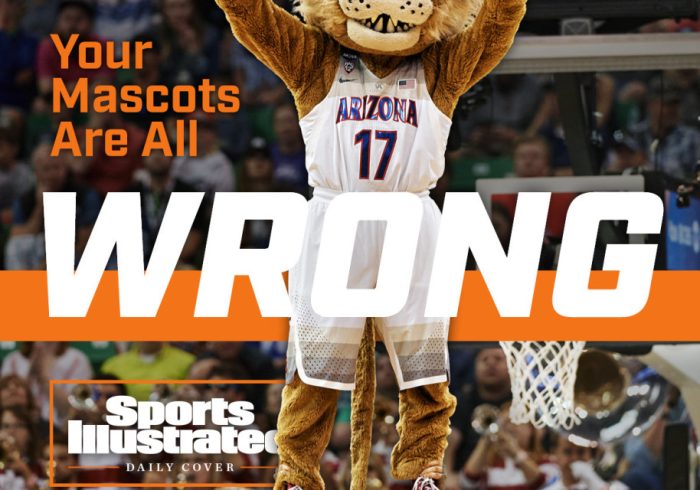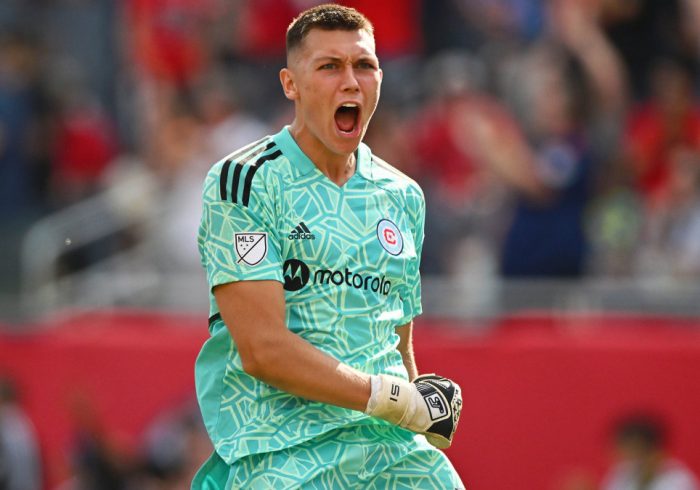Peter Berg lives in the emotions that drive stories, whether making Friday Night Lights or Lone Survivor or throughout his other 40-some-odd projects. But there’s a difference between the visceral nature of his work and actually living through tragedy … with his subjects … while trying to film.
It’s a difference Berg would rather not know, the pain evident on his face over a recent Zoom call, where all he can do is shake his head. His upcoming documentary, Boys in Blue, which is available for streaming on Showtime starting Jan. 6, placed him into a spot he’d never before encountered in his decades as an award-winning filmmaker. While following a high school football team and its coaches—most of whom are police officers in north Minneapolis—one main subject, a 15-year-old quarterback, was shot and killed in February. His name was Deshaun Hill Jr., and everybody, it seemed, loved him, cast and crew included.
Berg heard via a call from a producer. He flew to Minneapolis immediately, then sped toward the community at Minneapolis North, where his crew had spent the previous five months. Everyone huddled, trying to figure out next steps. They knew they had to capture Hill’s life and death and what each meant relative to the other. They also knew they would need to process their own grief, including guilt that crew members might feel over feeling anything at all, because their sadness wasn’t comparable to their subjects’ anguish.
“This is the reality of what’s happening all over our country,” Berg says. “This kind of senseless violence is just part of our life today.”
He knew right then that he needed to finish the film, that he needed to address someone who was distinct and a death that was sadly typical, to show the kid everyone called D-Hill and what it said—about his city, about America—that he lived to only age 15. Berg hoped that in presenting the narrative that way, real and honest and raw, the film might spark necessary conversations, along with empathy, kindness and humanity—three traits D-Hill embodied. “There’s no identifiable silver lining,” Berg says. “We thought we were making a show about these beautiful kids. And he shined. Honor roll student. Gifted quarterback. Shot in the middle of production. That’s not something that’s processable. I still can’t make sense of it.”
In Minneapolis, after the shooting, Berg continued to find out more about D-Hill. Friends described the teenager as humble, charming, gifted; his smile, they said, melted more than a few hearts. He played for the school’s football and basketball teams, aced his classes and dreamed of playing for a college gridiron power. “He wanted to get his family out of that poverty cycle,” Berg says. “Just a really beautiful young man.”
There’s one particularly poignant—and heartbreaking—scene in the series. It shows D-Hill and his parents in their living room. His mom, Tuesday Sheppard, lovingly speaks of her “boy” as their “ticket out.” Then she says something that will haunt viewers.
“The only thing that worries me is when he’s walking home from the bus stop.”
Sadly, that’s what happened. Hill was shot at an infamous intersection, where Penn Avenue North meets Golden Valley Road. Its infamy stems from other, similar incidents. A few blocks away on the same afternoon, a school bus driver was clipped by a bullet in the head, while three young students—as in, age 10 or younger—watched. He was expected to survive.
There’s enough violence at that intersection, particularly gun violence, that a community outreach group, We Push for Peace, sets up daily patrols for volunteers from noon until 5 p.m. But on the day of Hill’s murder, organizers attended another funeral, for another teenager, Jahmari Rice, who was shot near his high school. Patrol was canceled that day, in a tragic twist of the worst kind of timing.
Eventually, a police investigation led officers to a suspect. But he, too, was shot, in North Minneapolis. Soon, surveillance video unearthed a different suspect, Cody Logan Fohrenkam, who was arrested and charged with second-degree murder. The video appears to show Fohrenkam and D-Hill bump into each other, or nearly do so, meaning D-Hill’s death appears to be little more than a chance encounter, wrong place at the worst time.
Fohrenkam has a long criminal history, with assault, robbery and arson convictions. Since his rap sheet included felonies, he was not legally allowed to own a gun. But his conviction for illegal possession of a firearm meant Fohrenkam had not abided by his penalties. He is expected to stand trial, after a delay, next month, the same month as Berg’s documentary release.
The film is based on a story from The New York Times, in which talented columnist Kurt Streeter—full disclosure: I do some script writing for Showtime, and Kurt is a friend—followed the Minneapolis North Polars through part of the 2020 season. Berg used the piece as a template to fashion his four-part docuseries, which follows the same program, with a few different characters (like D-Hill) in place, through ’21. In both the written story and the adaptation, George Floyd’s murder is part of the backbone, along with the harsh reality the subjects confront every time they walk out their doors.
The contrasts heighten the tension throughout the series. It’s cops and the communities that they patrol. It’s athletes and the violence they must avoid. It’s police brutality and a better understanding of the dangers all cops face. By exploring those dynamics without a predetermined answer, Berg elicits what’s often lacking in these conversations, sentiments like nuance and complexity.
One such segment in the documentary delves into the background of Sergeant Tim Lawrence, a white police officer who went viral for an incident at a bus stop in 2018. What was captured on social media and sent all over the world isn’t exactly what happened that afternoon. Without giving too much away, it’s possible to find empathy for Lawrence while not disregarding a very real issue like police brutality.
In both versions of the story, Charles Adams is the most compelling character. He’s a former cop, a two-decade veteran of the force, in Minneapolis who now runs security for the Minnesota Twins. He’s also the Polars’ coach. When Floyd was murdered, Adams had a football team to worry about and trauma to help them process. All while unrest spread throughout the city and officers he had worked with tried to keep the citizens he once protected safe. All knew the history, the shootings: Jamar Clark (2015), Philando Castile (’16), Daunte Wright (’21) and so many others.
Adams and his staff of mostly officers tried using football to bridge longstanding and wide-as-hell gaps. This wasn’t the Minneapolis that Berg remembered, his familiarity owing to a five-year stint living in the Twin Cities. He remembers the cold, the (related) hardiness of the locals and, well, the cold. But like many cities in America, he watched as Minneapolis changed and how and who it impacted, like the communities in the city’s north.
When Hill was shot, Adams was on the road with the Twins. He had, Berg says, never lost one of his own, a player on a team he coached, before. He came back and dedicated last season to D-Hill, hoping that it would help the rest of his team heal. Showtime’s cameras captured a particular rallying cry.
“Who’s this for?” coaches would shout.
“Nine!” the players would respond, meaning D-Hill, who wore that jersey number.
The Polars won their first eight games to honor their teammate. Their only loss, a 21–20 heartbreaker to Howard Lake–Waverly-Winsted, ended their season. But as far as heartbreak goes, defeat wasn’t close to the same thing. D-Hill had played part of the previous season despite a broken bone in his leg. Adams implored his players to use a similar fortitude to layer meaning onto his death.
The series captures how much he cares. His existence at the center of one of the most prominent issues in modern-day America isn’t an act. After Floyd was killed, Adams donned riot gear, then summoned his players onto a videoconference. He told him he loved them, because he wondered whether he’d ever be able to tell them that again. He didn’t bury the emotional heft of that night afterward, either. He spoke about PTSD, or something like it, and how he would move forward, how he’d try.
There’s one scene in the docuseries that highlights his conundrum. He’s part of that community and he’s making the kind of positive impact that locals cannot help but recognize. And yet, he’s also … one of them, a 20-year cop from a family of officers. In this scene, Adams is in the barber shop, ostensibly for nothing more than a haircut, when a heated debate erupts. He listens. He counters. And, ultimately, he moves on, because the barbers and their other clients will never understand the other side he saw—the other side he sees.
Along the way, Berg learned a few lessons that might be instructive to viewers with open minds. Like, he says, “We saw that the community that was most impacted by these issues of policing were the loudest champions of the police. And, frankly, the wealthy, white neighborhoods in the suburbs were trying to defund the police, because they thought that’s the right thing to do.”
All of these events led to the docuseries, and when Berg and his crew finished a version that was close to complete, they rented a screening room in Minneapolis and flew back. They wanted to show Adams, his coaches, his players and D-Hill’s surviving family the nearly finished product. He expected an intense reaction, more processing, more grief.
Hill’s killing is revealed in the fourth and final episode. But as his family watched the first three, Berg noticed something unexpected: laughter, happy tears, even joy. The series won’t change gun violence in America, nor will it drastically alter the community where it was filmed. But it’s a start, a critical step in the right direction. D-Hill’s family seemed to understand that. But what, I asked Berg, would Hill himself make of the film?
“He would have loved it,” Berg says. “His legacy will be as one of the good guys, a kid who knew what he wanted and did everything right. That’s what makes all of this so sad. No one’s going to see him grow and realize all his size and strength. His maturity and leadership was special. But his legacy will be more of beauty and aspiration.”
It’s the best thing within the worst thing, and that still matters, even if they’d all trade every second of footage for an alternate ending.



